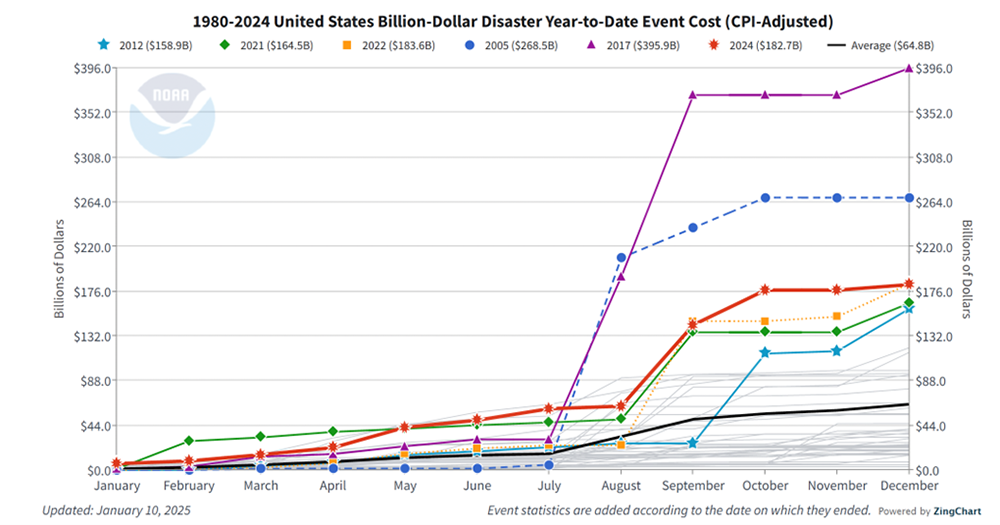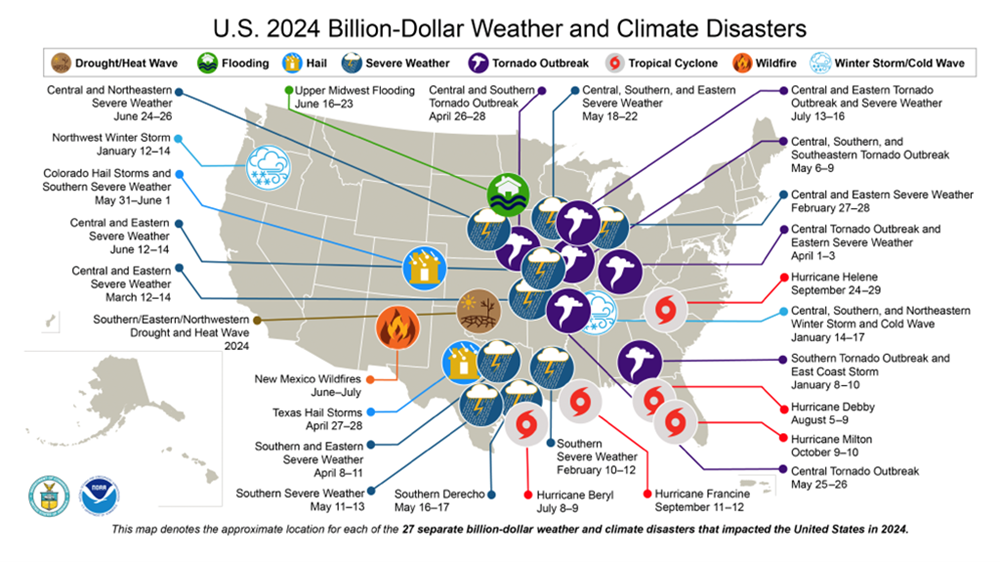According to the Climate Policy Initiative (CPI), if we invest $266 trillion over the next 25 years, 10.6 tr/yr, we can achieve a 1.5° Celsius world, as described in the Paris Agreement, and we will save $1,266 trillion in avoided losses. That is one dollar of investment for saving six.
And the downside looks terrible!
If we do not invest, we double the losses.
The losses include a reduction in working hours worldwide of over 2.3 percent, an increase in US health costs of more than $800 billion, and an additional 250,000 deaths per year between 2030 and 2050 from malnutrition, malaria, diarrhea, and heat stress. Other impacts, such as biodiversity, nature loss, and the broader social costs like increased conflict and migration, are complicated to quantify but real (Alberti, 2024). The estimate of the cost of inaction is based on modeling done by the Network for Greening the Financial System.
In a separate study by the World Bank, the health costs due to climate change of 68 low- and middle-income countries (comprising 96 percent of all LMICs) are depressing: “By 2025, the number of deaths caused by climate change could reach between 14.5 and 16.5 million. Immediate and decisive action is needed to avert the devastating impacts on health across LMICs.” (World Bank, p. 2, 2024). Sub-Saharan Africa and South Asia are expected to be the regions hit hardest by climate change.
And the truly alarming part is that we are likely to trigger an environmental tipping point. Nine global core tipping elements and seven regional impact tipping elements are known. Out of those, one regional and three global climate elements will likely pass a tipping point if global warming reaches 1.5°C (2.7°F). They include the Greenland ice sheet collapse, the West Antarctic ice sheet collapse, the tropical coral reef die-off, and the boreal permafrost abrupt thaw (Armstrong McKay, 2022).
Abundant evidence shows global temperatures are rising. It is harder to be a denier.
Billion-dollar weather- and climate-related disasters have significantly accelerated in the US, reaching $183 billion in 2024. Last year, we experienced the complete range of disasters, including droughts and heatwaves, flooding, hail, tornado outbreaks, tropical cyclones, wildfires, and winter storms/cold waves.
And we often don’t connect the dots. I was born in San Antonio and have visited the Guadalupe River camping areas, the site of the recent flood disaster, killing over 120 people, with 170 still missing. I do not claim the flood was caused by climate change; it may or may not have been, but the increasing number of floods nationwide should have alerted the officials to implement a better warning system and to question the location of some camp buildings.
I am not optimistic that we will take the correct climate improvement decisions, avoiding a doubling of costs. Unfortunately, there are many wrong reasons for this.
It began with petroleum executives, some of whom I have known, who began a thirty-year campaign of misinformation and, together with others of the economic elite, have used PACs and Super PACs to influence politics. It is not a coincidence that Trump repeats the slogan “Drill, baby, drill.”
The concept of relevant time has shortened. It was always a quarter or at best the next year for Wall Street. For social media, it seems to be only seconds or days. For a politician, the midterm election is a critical time span. This implies that long-term phenomena, for example, climate change impacting over decades, are not in our time frame and are not important.
This means that we really don’t care much for our grandchildren.
Also, the narrative has won over the scientific evidence-based approach, particularly in the media and politics. The stories of Trump and others are taken for truth. My story is as good as yours; there is no truth. This is in contrast with all the science being used in the technological, AI, medical, biological, mathematical, and other scientific fields being performed by our college graduates. It increases the educational dichotomy in the US and leaves our university graduates with a dilemma over the appropriate method in the policy and political fields. Ninety-nine percent of the world’s scientists can give evidence for one position, and Trump can tell the story of fake news. This does not bode well for American democracy either.
For a society to progress, it must evolve, not by brute force of its leaders, but by seeking the path of collaboration that favors the adaptation of the species.
References
Alberti, C. (2024), The Cost of Inaction, January, Climate Policy Initiative.
Armstrong McKay, David; Abrams, Jesse; Winkelmann, Ricarda; Sakschewski, Boris; Loriani, Sina; Fetzer, Ingo; Cornell, Sarah; Rockström, Johan; Staal, Arie; Lenton, Timothy (9 September 2022). "Exceeding 1.5°C global warming could trigger multiple climate tipping points." Science. 377 (6611).
World Bank (2024), The Cost of Inaction: Quantifying the Impact of Climate Change on Health in Low-Income and Middle-Income Countries, Washington, DC: World Bank.



















